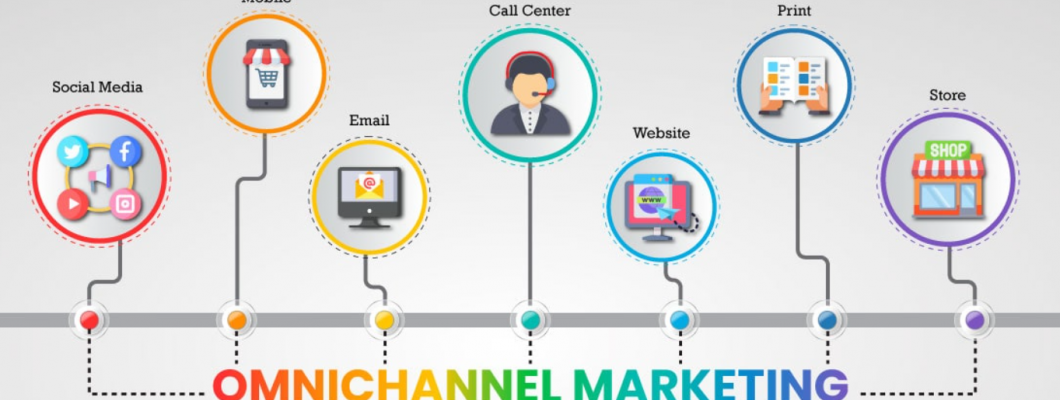
In today’s hyper-connected digital landscape, a brand’s presence is no longer confined to a single platform. Customers interact with brands across multiple touchpoints from websites and mobile apps to social media, email, and even physical stores. Each of these touchpoints shapes how audiences perceive and connect with your brand. This is where omnichannel branding comes into play ensuring that your message, visuals, and values remain consistent everywhere your brand appears.
What Is Omnichannel Branding?
Omnichannel branding is the strategic approach of delivering a cohesive and unified brand experience across all channels. Unlike multichannel marketing where each platform operates independently omnichannel branding creates a seamless flow that allows customers to transition effortlessly between platforms without losing the brand’s essence.
For example, a customer might discover your brand on Instagram, browse products on your website, and later receive a personalized email all while experiencing the same tone, design, and emotional connection.
Why Consistency Matters in 2025
In a world overflowing with content and competition, consistency has become the foundation of trust. According to recent studies, brands that maintain visual and message consistency across platforms increase revenue by over 20%. Consistency reinforces recognition, builds credibility, and ensures that your audience knows what to expect from you.
Inconsistency, on the other hand, creates confusion and weakens brand recall. If your social media voice feels playful but your website tone is corporate, users may struggle to connect. The goal is to present a unified identity — one that feels familiar, reliable, and authentic at every interaction.
The Core Elements of Omnichannel Branding
Visual Consistency
Visual identity is the backbone of brand recognition. Ensure that your logo, color palette, typography, and imagery are consistent across every platform. This doesn’t mean everything has to look identical — adaptability is key — but every visual should feel unmistakably “you.”
Use brand guidelines to maintain uniformity.
Optimize visuals for different devices and formats.
Keep a balance between consistency and creativity.
Unified Voice and Tone
Your brand’s voice should reflect your personality — whether it’s friendly, authoritative, or inspiring. A consistent tone across website copy, email newsletters, and social media posts builds a strong emotional connection.
Define your brand voice in a tone guide.
Train all teams (marketing, support, and sales) to align with this voice.
Adjust tone slightly depending on platform — for example, more conversational on social media and formal on corporate pages — but always stay authentic.
Seamless User Experience (UX)
Omnichannel branding extends beyond visuals — it’s also about how users interact with your brand. Every channel should provide a smooth, intuitive experience that reflects your identity.
Ensure easy navigation between website, app, and social media.
Maintain consistent UI/UX design principles.
Offer personalized recommendations and experiences across platforms.
Content Alignment
The messaging across your campaigns should tell one coherent story. Whether it’s a blog post, YouTube video, or email campaign, each piece of content should reinforce the same brand message and values.
Create a centralized content calendar.
Repurpose content while adapting it to each channel’s format.
Maintain consistent storytelling and brand pillars.
Customer Experience and Service Integration
Every customer interaction — from inquiry to purchase to post-sale support — contributes to your brand identity. Integrating customer service channels ensures that users receive consistent support and communication across email, chat, and social media.
Technology’s Role in Omnichannel Branding
Technology has made it easier than ever to manage and synchronize brand experiences. In 2025, brands are leveraging AI-driven personalization, automation, and analytics tools to ensure consistency and relevance at scale.
CRM systems help unify customer data across platforms.
Automation tools ensure timely and consistent communication.
Design systems allow teams to maintain visual harmony across projects.
The rise of data-driven design enables marketers to understand how users engage across touchpoints and optimize brand experiences in real time.
Challenges in Maintaining Omnichannel Consistency
While the benefits are immense, achieving omnichannel consistency isn’t without its hurdles:
Managing content across multiple platforms can be overwhelming.
Different departments may interpret brand guidelines differently.
Rapidly evolving digital trends can make consistency harder to maintain.
The solution lies in strong internal alignment — ensuring that marketing, design, and customer service teams collaborate closely under one shared brand vision.
Best Practices for Omnichannel Branding Success
Develop Comprehensive Brand Guidelines – Include color codes, logo usage, tone of voice, and examples of platform-specific content.
Use Centralized Asset Libraries – Tools like Figma, Canva, or Notion can store approved assets accessible to all teams.
Personalize, Don’t Fragment – Adapt your content to each audience segment while keeping your core identity intact.
Leverage Cross-Channel Analytics – Understand which touchpoints drive engagement and refine your omnichannel strategy accordingly.
Test and Iterate – Continuously review your brand presence across platforms and make data-backed adjustments.
Brands That Excel in Omnichannel Consistency
Apple – From retail stores to digital ads, Apple maintains a sleek, minimal aesthetic and a consistent tone emphasizing innovation and simplicity.
Nike – Seamless storytelling across social media, mobile apps, and physical stores, unified by its bold, empowering message: “Just Do It.”
Starbucks – Delivers consistent brand warmth through visuals, personalized app experiences, and in-store design.
These brands prove that omnichannel consistency not only strengthens recognition but also drives loyalty through cohesive experiences.
The Future of Omnichannel Branding
As AI, AR, and immersive technologies evolve, omnichannel branding will move toward adaptive personalization — where each user’s journey feels uniquely tailored but still unmistakably aligned with the brand. Brands that master this balance between personalization and consistency will thrive in the digital era.
Conclusion
Omnichannel branding is more than just maintaining uniform visuals — it’s about delivering a seamless, connected experience that builds trust and loyalty. In a world where users switch between platforms in seconds, your brand’s ability to remain recognizable and reliable defines its strength.
By unifying your voice, visuals, and experiences across every touchpoint, you’re not just creating brand consistency — you’re building brand confidence.










Leave a Comment